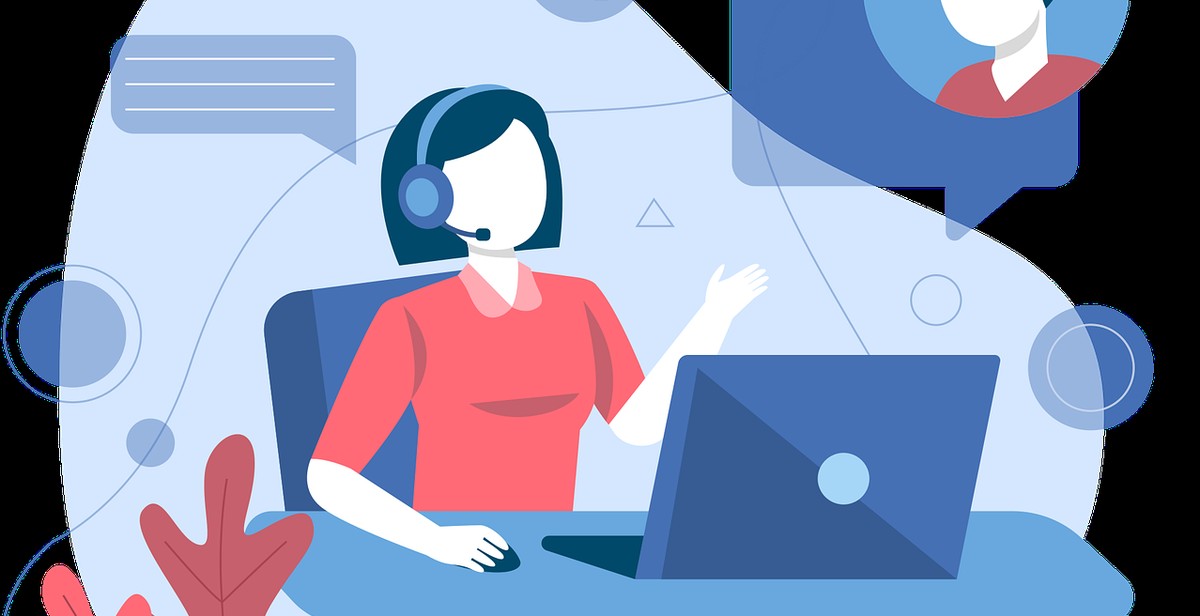Introduction
Artificial Intelligence (AI) has become an integral part of our lives, from virtual assistants like Siri and Alexa to self-driving cars and personalized recommendations on e-commerce platforms. AI systems are designed to learn from data and make decisions based on that data. However, these systems can also inherit the biases and prejudices of their human creators. This phenomenon is known as AI bias.
What is AI Bias?
AI bias is the unfair and discriminatory treatment of people based on their race, gender, age, or other characteristics that are protected by law. It occurs when AI systems make decisions that reflect the prejudices and biases of their human creators. For example, a hiring algorithm might reject job applicants based on their gender or race, or a facial recognition system might misidentify people of color more frequently than white people.
Why is AI Bias a Problem?
AI bias can have serious consequences, including perpetuating existing social and economic inequalities, infringing on people’s human rights, and eroding trust in AI systems. It can also lead to real-world harm, such as wrongful arrests or denials of credit or insurance based on biased algorithms. Moreover, AI bias is difficult to detect and correct, as it often operates invisibly within complex algorithms and data sets.
In this article, we will explore the causes and consequences of AI bias, as well as the strategies and best practices for mitigating it. We will also examine some real-world examples of AI bias and discuss the ethical implications of this emerging challenge.
Types of AI Bias
Artificial intelligence (AI) is designed to make unbiased decisions based on data and algorithms, but unfortunately, AI can still be biased due to the input it receives from humans. AI bias is the result of human prejudices and stereotypes that are reflected in the data sets used to train AI systems. Here are some of the most common types of AI bias:
Stereotyping Bias
Stereotyping bias occurs when AI systems make assumptions based on preconceived notions about certain groups of people. For example, an AI system used to analyze job applications may be biased against women or minorities if the data set used to train the system is biased towards men or non-minorities. This can result in discriminatory hiring practices and perpetuate systemic inequalities.
Sample Bias
Sample bias occurs when the data used to train AI systems is not representative of the entire population. For example, if an AI system is trained on data that only includes people from a certain geographical area or socioeconomic group, it may not be able to accurately predict outcomes for people outside of that group. This can lead to inaccurate predictions and reinforce existing biases.
Confirmation Bias
Confirmation bias occurs when an AI system is designed to confirm pre-existing beliefs or assumptions. For example, an AI system used to analyze crime data may be programmed to look for patterns that confirm the belief that certain groups of people are more likely to commit crimes. This can lead to discriminatory policing practices and perpetuate stereotypes.
It is important to recognize these types of AI bias and take steps to mitigate them in order to ensure that AI systems are making fair and unbiased decisions. This can include diversifying data sets used to train AI systems, regularly auditing AI systems for bias, and involving a diverse group of stakeholders in the development and deployment of AI systems.
Causes of AI Bias
Artificial intelligence (AI) is designed to make decisions based on data and algorithms without human interference. However, AI systems can be biased, just like humans. AI bias occurs when an AI system produces results that are unfair or discriminatory towards certain groups of people. Here are three main causes of AI bias:
Data Bias
Data bias occurs when the data used to train an AI system is not diverse enough. If the data used to train an AI system is biased, the system will learn and reproduce that bias in its decision-making process. For example, if an AI system is trained on data that has a disproportionate number of men compared to women, the system may learn to favor men over women in its decision-making process.
Algorithm Bias
Algorithm bias occurs when the algorithms used in an AI system are biased. Algorithms are sets of rules that an AI system follows to make decisions. If these rules are biased, the AI system will produce biased results. For example, an algorithm that uses zip codes to determine creditworthiness may be biased against people who live in low-income neighborhoods.
Human Bias
Human bias occurs when the people who design, develop, and train AI systems have their own biases. These biases can be conscious or unconscious. For example, if the people designing an AI system are primarily white males, the system may be biased towards white males. Additionally, if the data used to train an AI system is labeled by humans, those humans may introduce their own biases into the data.
It is important to recognize and address these causes of AI bias to ensure that AI systems are fair and unbiased. The consequences of AI bias can be significant, ranging from discrimination in hiring and lending to medical misdiagnosis and even wrongful imprisonment.

Examples of AI Bias
Artificial Intelligence (AI) is revolutionizing the way we live and work. However, AI systems are not immune to bias and can mirror human prejudices. Here are some examples of AI bias:
Facial Recognition Technology
Facial recognition technology is used in various applications, including security and law enforcement. However, studies have shown that facial recognition technology has racial and gender biases. For example, a study by MIT found that facial recognition technology has a higher error rate for darker-skinned individuals and females. This bias can have serious consequences, such as false arrests and wrongful accusations.
Criminal Sentencing Algorithms
Criminal sentencing algorithms use AI to predict the likelihood of a defendant committing another crime. However, these algorithms have been found to have biases against certain groups, such as African Americans. A study by ProPublica found that a popular criminal sentencing algorithm was twice as likely to falsely flag African American defendants as high risk compared to white defendants. This bias can lead to unjust and unfair sentencing.
Recruiting Algorithms
Recruiting algorithms use AI to filter job applications and identify the best candidates. However, these algorithms can have biases against certain groups, such as women and minorities. For example, Amazon had to scrap its AI recruiting tool because it was biased against women. The tool was trained on resumes submitted to Amazon over a 10-year period, which were mostly from men. As a result, the tool penalized resumes that contained words like “women” and “female”. This bias can lead to discrimination and a lack of diversity in the workplace.
Conclusion
AI bias is a serious issue that needs to be addressed. It can lead to discrimination, unfairness, and lack of diversity. To prevent AI bias, it is important to ensure that AI systems are designed and trained with diverse data sets and that they are regularly audited for biases.

Solutions to AI Bias
The issue of AI bias has become a growing concern, as more and more organizations are relying on artificial intelligence and machine learning algorithms to make decisions. Fortunately, there are several solutions that can help mitigate bias in AI systems.
Diverse Training Data
One of the most effective ways to address AI bias is to ensure that the training data used to develop the algorithms is diverse and representative of the population. This means including data from a wide range of sources, including different races, genders, ages, and geographic regions. By incorporating a diverse set of data, AI systems can learn to make decisions that are more fair and accurate across different groups of people.
Algorithmic Transparency
Another solution to AI bias is to increase the transparency of the algorithms themselves. This means making it easier for users to understand how the algorithms work and what factors they take into account when making decisions. By providing more information about the algorithms, organizations can help ensure that they are making fair and unbiased decisions.
Human Oversight
Finally, it is important to have human oversight of AI systems to ensure that they are making fair and ethical decisions. This can include having human reviewers check the results of AI algorithms, as well as having a diverse team of developers and data scientists who can identify and address potential biases in the system.
| Solution | Description |
|---|---|
| Diverse Training Data | Incorporating a wide range of data sources to ensure that AI systems learn to make fair and accurate decisions across different groups of people. |
| Algorithmic Transparency | Increasing the transparency of AI algorithms so that users can better understand how they make decisions. |
| Human Oversight | Having human reviewers and a diverse team of developers and data scientists to identify and address potential biases in AI systems. |
Overall, addressing AI bias requires a multi-faceted approach that includes diverse training data, algorithmic transparency, and human oversight. By implementing these solutions, organizations can ensure that their AI systems are making fair and unbiased decisions.
Conclusion
Artificial intelligence has the potential to revolutionize the way we live and work. However, it is important to recognize that AI systems are not immune to human biases and prejudices. As we have seen, AI bias can have serious consequences, particularly in areas such as criminal justice and employment.
It is therefore essential that we take steps to address AI bias and ensure that these systems are fair and unbiased. This includes collecting diverse data sets, testing algorithms for bias, and ensuring that human oversight is built into the development process.
As AI continues to advance, it is important that we continue to monitor and address issues of bias and discrimination. By doing so, we can ensure that these powerful technologies are used to benefit society as a whole, rather than perpetuating the biases and inequalities that exist in our world today.
- Collect diverse data sets
- Test algorithms for bias
- Ensure human oversight in development process
- Monitor and address issues of bias and discrimination
By taking these steps, we can create a future where AI is used to promote fairness, equality, and justice for all.
